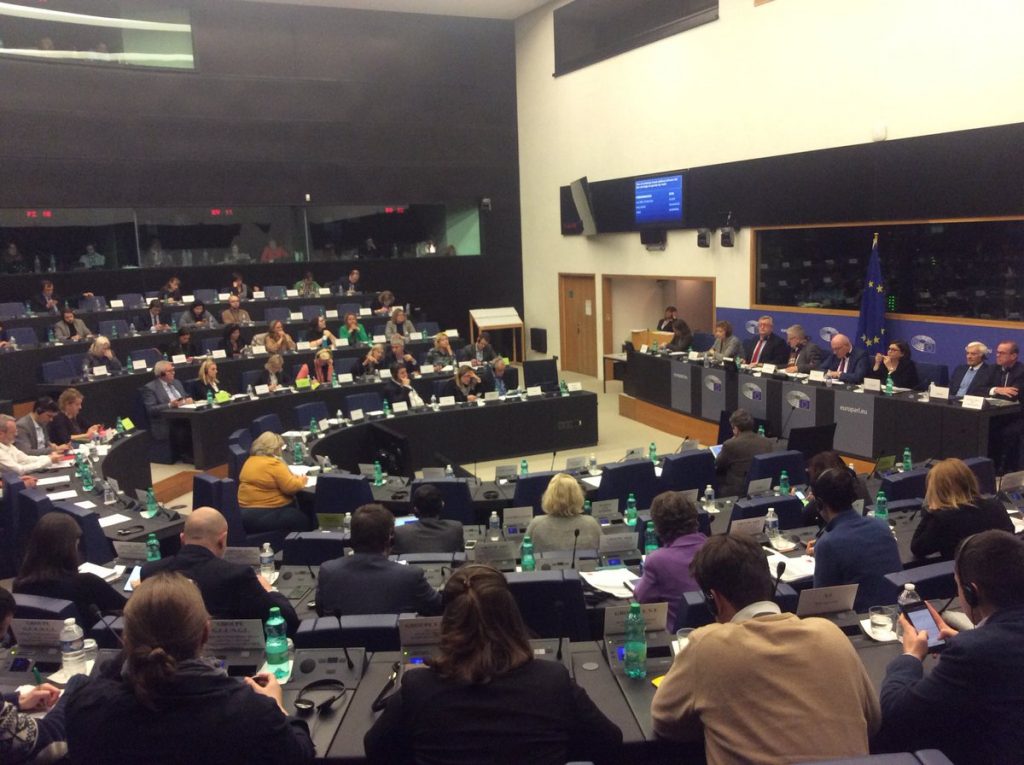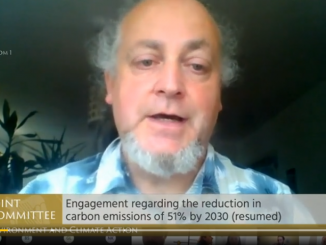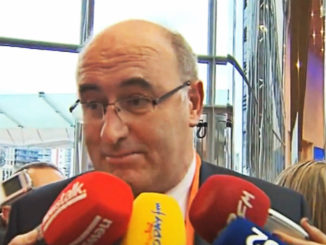
In part one of this two part series, we outlined the background to the current CAP reform process thus far. Below, Sebastian Lakner unpacks where the different actors are at now, before a significant vote in the Agriculture Committee on the 2nd April (agenda here) (meeting documents here). These articles were originally published in German on Lakner’s blog.
What do we know of the institutional positions so far?
During the first exchange rounds, some papers and positions have been launched and discussed in the Council. The EP AGRI has been working on the legal texts since late summer. Here you can observe the following details:
Different positions of the member states in the Council
Within Member States (MS), there is disagreement about the role of the Rural Development Programs (Pillar II) with respect to finances and content. The proposal for the multiannual financial framework (MFF) of May 2018 proposes a budget cut such that, if we take into account inflation and other effects, the 2nd pillar is supposed to be cut by 11% and the second pillar by 28% according to Alan Matthews. The Austrian Presidency then submitted an unofficial paper on ideas in September 2018 stressing the importance of rural development and calling for strengthening (see my blog post of Sept 2018, in German). For this purpose, some position papers were presented in January, which emphasize the importance of the Second Pillar in different ways. The progress report of the Austrian Presidency from the meeting on 17.12.2018 shows the topics discussed in the Council.
In a similar vein, a larger group of Eastern European states presented a position during the meeting of 23.01.2019, emphasising the importance of Rural Development Programs (similar to Austria) to address environmental, climate and biodiversity challenges. Society’s expectations for safe, high-quality food can be addressed in Pillar Two, while the paper advocates tackling rural issues such as digitization and broadband coverage. This paper also argues more clearly for a financial strengthening of the Second Pillar.
The French government also published a position paper in December 2018, which does not however completely fit Emanuel Marcon’s openness to EU reforms. On the one hand, the paper emphasises high-quality food production: the government in Paris wants to promote agroecological transformation through higher ambitions. On the other hand, the French government asks for a uniform standard through direct payments and also coupled payments (15%) on the EU markets.
“France recalls the importance of direct payments as an essential safety net,” says the paper. Both positions seem inconsistent, since direct payments stand in the way of an ambitious CAP-reform, a reform focusing budgets on measures for high quality food or on progress in environment and animal welfare. Overall, the paper is very detailed in terms of environmental ambitions, which is already different from the previous French governments. The government of President Macron is open to environmental ambitions and says what its goals are, in contrast to the German government, whose position or non-position I will present below. In this respect, France could theoretically be a game changer in this 2020 reform.
On 1 March 2019, the Romanian Council Presidency presented a possible compromise paper, which sets out possible discussion points for the Council:
- Change in the definition of grassland status (Article 4), so that grassland that is not in rotation and has not been plowed for five years is not changed from farmland to permanent grassland.
- Exceptions to the new conditionality for small farmers in terms of “Good Agricultural and Ecological Status (GAEC)”.
- On the issue of the “Eco-Schemes”, the paper discusses whether these should be mandatory or voluntary for the member states and whether there should be a minimum budget for eco-schemes. The question is also, whether Eco Schemes are available for collective applications.
- The financial ring-fencing of 30% for environmental protection within the pillar II is up for discussion.
- No change in modulation compared to the Commission’s proposal.
- Article 92, which states the claim of a higher environmental ambition, is discussed and could be deleted.
- Greater deviations from the objectives of the strategic plans should be possible for the member states; the performance bonus could be canceled.
Overall, the proposals in the Romanian Presidency paper shows that the Council is dealing with proposals that discuss simplifications rather than an ambitious reform, even though individual details may be useful, such as the change of grassland status.
The CAP position of the BMEL: Sorry, no position available
In contrast to the lively debate in Brussels/Straßbourg, the Federal Ministry of Food and Agriculture (BMEL) and in particular Julia Klöckner (CDU) deliberately hold back any positions. Two parliamentary requests from the Green Group (Doc No 19/5131 of 18.10.2018, p.19 / 20) and Kirsten Tackmann (left) (Question No.11 / 216 on 20.11.2018), both asking for a position on the CAP-reform, were almost provocatively answered in a monosyllabic manner. The main argument was that the eco-schemes had to be analysed first. The proposals were published on June 1, and the requests came in October and November. It seems that it took a long time for the Ministry to examine the Commission’s proposal.
The most detailed information in fact is a document from the press conference of the BMEL of 12.03.2019, celebrating Julia Klöckner’s one year in office, in which at least some vague statements were listed on the CAP-reform. The Ministry claims that it wants to further develop the CAP (whatever that means) and “link” direct payments to environmental and climate-related services. In a similar style, the ministry writes: “More environmental, climate and nature protection: The intended increase in flexibility for the member states should not lead to environmental standard dumping. The criteria must be efficient, target-oriented, but ultimately also feasible. The results are important, not the process.”
Well spoken, however, so far, it is completely unclear how such a “coupling” should succeed, because this type of coupling has already been tested within the implementation of Greening 2014-2020 and in the end, Greening and the Ecological Focus Area have shown a low effectiveness (Pe’er et al. 2017), but at comparatively high expenses (Pe’er et al. 2017: p.6). And even the administration of Greening is perceived as highly complex (see our Arc2020 blog post of June 2017). In its Special Report 21/2017 of December 2017, the European Court of Auditors concludes that greening is largely income policy: “We found that greening, as currently implemented, is unlikely to meet this objective, mainly due the low level of requirements, which largely reflect the normal farming practice.” (See press release of 12.12.2018).
Ecological Focus Area in Germany: What Influences Farmers’ Decisions?
The ministry also does not state what tools are needed to improve environmental, climate and nature conservation. This is absurd: insofar as we know that the Ministry is already working on the strategic plans for the CAP post 2020 for several months, however without informing the public on its intention.
At the same time, the spokesperson for the agricultural policy of the CDU / CSU parliamentary group, Mrs. Mortler, has announced that she will not modulate any funds to the second pillar beyond the already existing 4.5%. It seems quite probable, that there will be less money available for the effective agri-environment programs in Pillar II. The ministry stays silent on these issues. On the web, we can find nice social media work with shiny broadcast-videos of Julia Klöckner, visiting farms or forests. What’s missing is a clear statement about the most important decision she has to make.
Commission Ag Chief praises its good links with COPA / COGECA
The Commission paper “Future of Food and Farming” contains many statements on sustainability and the promotion of environmental services in agriculture. However this would require a strengthening of the agri-environmental programs in pillar II. Yet the importance of income support is emphasized repeatedly (see Blog-post on Arc2020 in February 2018) Agriculture Commissioner Phil Hogan confirms this criticism by repeatedly arguing for direct payments, which actually undermine the claims of the paper “Future for Food and Farming”. Phil Hogan praised himself in a speech at COPA / COGECA on June 14, 2018, “…I have fought tooth and nail to ensure that Direct Payments remained the top priority in the MFF discussions”. From my perspective, the question would be how much the Commission’s statements on sustainability are worth when this finally ends up in maintaining and even increasing direct payments beyond 2020. He also said: “Indeed, close consultation with both COPA and COGECA has been a constant feature of the process in preparing and drafting this proposal.“ The good relationship with COPA and COGECA seems to him more important than the expectation of the citizens. Whatever about the level of formal evidence of the influence of the farm lobbies in Brussels, it’s clear from what Commissioner Hogan says with his own words that this influence is clear and present.
22 Scientists say CAP Communication “fails to address main agricultural challenges”
The Environment Committee favors environmental ambition
On 14.02.2019, the Environment Committee of the European Parliament adopted an opinion on the CAP reform, which clearly turns the EU Commission’s proposal towards a true green architecture. The amendments are very detailed and ambitious. The following points stand out:
More ambition over financial requirements (ring fencing)
- Eco-Schemes: 30% of the funds to be earmarked for the eco-schemes. A list of available options has to be fixed by the EU commission through a delegated act, which restricts the options by MS. This might help to restrict another round of greenwashing eco-schemes.
- Agri-environmental programs: Under the second pillar, 40% of the funds should be earmarked for environmental measures that meet the objectives set out in Articles 6 d), e) and f) (resources, climate and biodiversity). This corresponds to the (high) shares of spending in e.g. Baden-Württemberg, Bavaria, NRW and Rhineland-Palatinate. However, in other regions, less funds are spent on environment in Pillar II, so this would bring progress in financial terms.
- Available funds stemming from capping will be shifted to the Eco-Schemes or to Pillar II, which would additionally strengthen the environmental aspect.
- Conservation: Financial resources should also be earmarked for the goal of biodiversity. The recitals recommend that at least € 15 billion be spent on biodiversity across the EU. Here the member states are to derive analyzes based on strength weakness.
- Modulation: The ability to transfer funds from Pillar II to I should be abolished.
- Increased environmental requirements (GAEC) within the “new conditionality”:
- Animal Production: Maximum livestock density per farm and animal welfare criteria.
- Permanent grassland: protection of existing grassland and clear restrictions on plowing up permanent grassland.
- Greening up to now: Requirement to have 7% of the agricultural area for non-productive purposes and at least four years of crop rotation containing legumes.
- Buffer strips: At least 3 meters wide, no pesticides allowed.
- Irrigation: Agricultural investment programs should not contain harmful side effects on the environment (see Art 68 (1)). Irrigation support is only allowed if water consumption in the catchment area is reduced (68 (3)). Restrict coupled payments to animal production in water conservation areas.
- Coupled payments to beef and veal production are expected to cease, coupled payments for grazing will only be granted in combination with environmental requirements.
In this reform, the EPs ENVI committee is part of the decision-making process and has documented quite high environmental ambition and a great deal of work on details. It is rather unlikely however that these will prevail overall. This position does show in which direction things could go if political will exists. An ambitious reform with respect to environment is possible based on this position.
Agriculture Committee of the European Parliament plays on time
On 19/02/2019, the committee decided not to hold a vote in the plenary of the European Parliament before the election of the European Parliament (23-26 May 2019). There have been more than 5.400 amendments within the committee, which are now reduced on 123 compromise amendments. The positions will be presented in the committee on April 2, 2019. Content wise, there is still disagreement within the committee, about the financial requirements towards the Eco Schemes (Greens says 60% of DP, EEP says 20%); the question of whether or not capping should be mandatory for MS; and about the percentage of modulation between pillars (IEG Policy Weekly on March 20, 2019).
However, the amendments are extremely detailed, and they cover aspects of all parts in the proposal, so that it is impossible, to give a summary or even a guess, as to what a compromise could look like. The different positions can be studied in the Agenda of April 2, and here as well: An ambitious reform could be done based on some of the amendments, but in the end, the committee can also vote for a business as usual-position, which is the slightly more probable position, given the actual majority. But this could still change, based on the election results in May.
Conclusion
In terms of content, there is a wide range of proposals, from extremely ambitious (EP ENVI), to ambitious towards pillar II (Council paper of the Eastern European countries), some mediating (France) to quite affirmative and towards direct payments (EU Commission). Some member states still hold back their position – the German government unfortunately is one of them. Since direct payments are repeatedly emphasized by CDU/CSU (member of the EPP) and an increased modulation to Pillar II has been rejected, I would rather expect a business-as-usual position with maintaining direct payments. However, the last word has not been spoken yet.
Does flexibility provide an opportunity? Some voices from academia had welcomed the increased flexibility, as this would mean the possibility of a better national adaptation of the CAP. Flexibility combined with efficient policy management could work.
However, the way the Commission’s proposal is constructed, with meaningless indicators and lack of process management and sanctions, flexibility will not lead to an improvement of the CAP. Further adherence to the direct payments should lead to a further seven years standstill and this would be a huge problem from an environmental point of view. Topics such as climate change, biodiversity loss, but also risk prevention would have to wait for another seven years in favor of an unjustified income policy. Overall, this is not a good sign, but nothing is decided yet and voting at the election of the European Parliament on May 23-26 may well change things.





